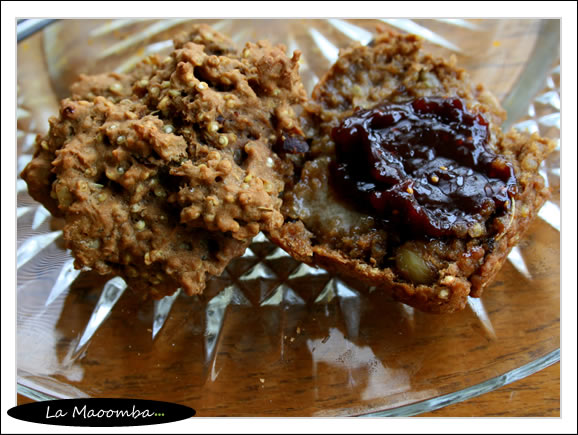There is always something new for me to discover at the market that caters to our city’s north Asian transplants and culinary fans. This time, it was acorn starch. Gluten-free and intriguing, I couldn’t resist grabbing a bag to experiment with.
Koreans use acorn starch to make a jelly called dotormiuk. I had other plans for it. In North America, acorns – the seeds of oak trees – were also a food staple among Native Americans and early settlers. I won’t get into the background or nutritional research, as others cover this ground far better than I can, but do a search, and you’ll find that acorns are high in amino acids and that there are a variety of old-timey ways – including pancakes, pemmican, grits, and bread – to use this under-represented seed.
Because acorns have yet to make inroads into modern U.S. cuisine, I turned to self-reliance and Paleo food sites for ideas on how to use acorn flour for baking. The flavors of the Tuscan Chestnut Cake (rosemary, raisins, and walnuts) described in the latter of the two sites sounded interesting. For a higher-nutrient recipe with these flavors in mind, I decided to make a batch of savory quinoa muffins using chopped figs, instead of raisins, for a hint of natural sweetness.
The result is a dense, moist muffin with a crispy top. The acorn flavor was not distinctive – it was overpowered by the stronger rosemary and walnut flavors. The muffins are tasty on their own, but a little fig spread complements their flavor well. I’m sure raspberry spread would also taste good.
If you are interested, here is the nutritional breakdown for one muffin, assuming the recipe as is and 12 muffins per batch.
GF/DF Tuscan-style Acorn Quinoa Muffins

Ingredients
- 1 cup uncooked quinoa
- 1 cup acorn starch
- ½ cup brown rice flour
- ½ cup tapioca starch
- 1 Tbsp baking powder
- 1 tsp xanthan gum
- 1 tsp salt
- 1 cup soy or nut milk
- 3 Tbsp olive oil
- 2 eggs
- 1 Tbsp agave nectar
- ⅓ cup chopped figs (with stems removed) or raisins
- ⅓ cup chopped walnuts
- 1 tsp dried rosemary leaves
Instructions
- Preheat oven to 350 degrees F. Lightly oil a 12-cup muffin tin; set aside.
- In a medium saucepan, bring quinoa and 1 cup water to a boil. Reduce to a simmer; cover and cook for 12 to 13 minutes, or until water has been absorbed completely.
- In a medium-sized mixing bowl, whisk together acorn and tapioca starch, brown rice flour, baking powder, xanthan gum, and salt.
- In a small bowl, whisk together soy milk, oil, eggs, and agave nectar. Add to flour mixture, along with raisins, walnuts, rosemary and 2 cups of the cooked quinoa. Stir briefly until all ingredients are combined.
- Pour batter into prepared muffin cups.
- Bake for 25 to 30 minutes, or until a toothpick inserted into the center of a muffin comes out clean. Cool muffins in pan for 3 or 4 minutes before transferring to a wire rack to cool completely.
- These muffins are best eaten fresh out of the oven or reheated in the oven at 350F for 5 minutes. They will store in an airtight container for about 5 days. Consider freezing some if you don’t think you’ll be able to eat them in time.
